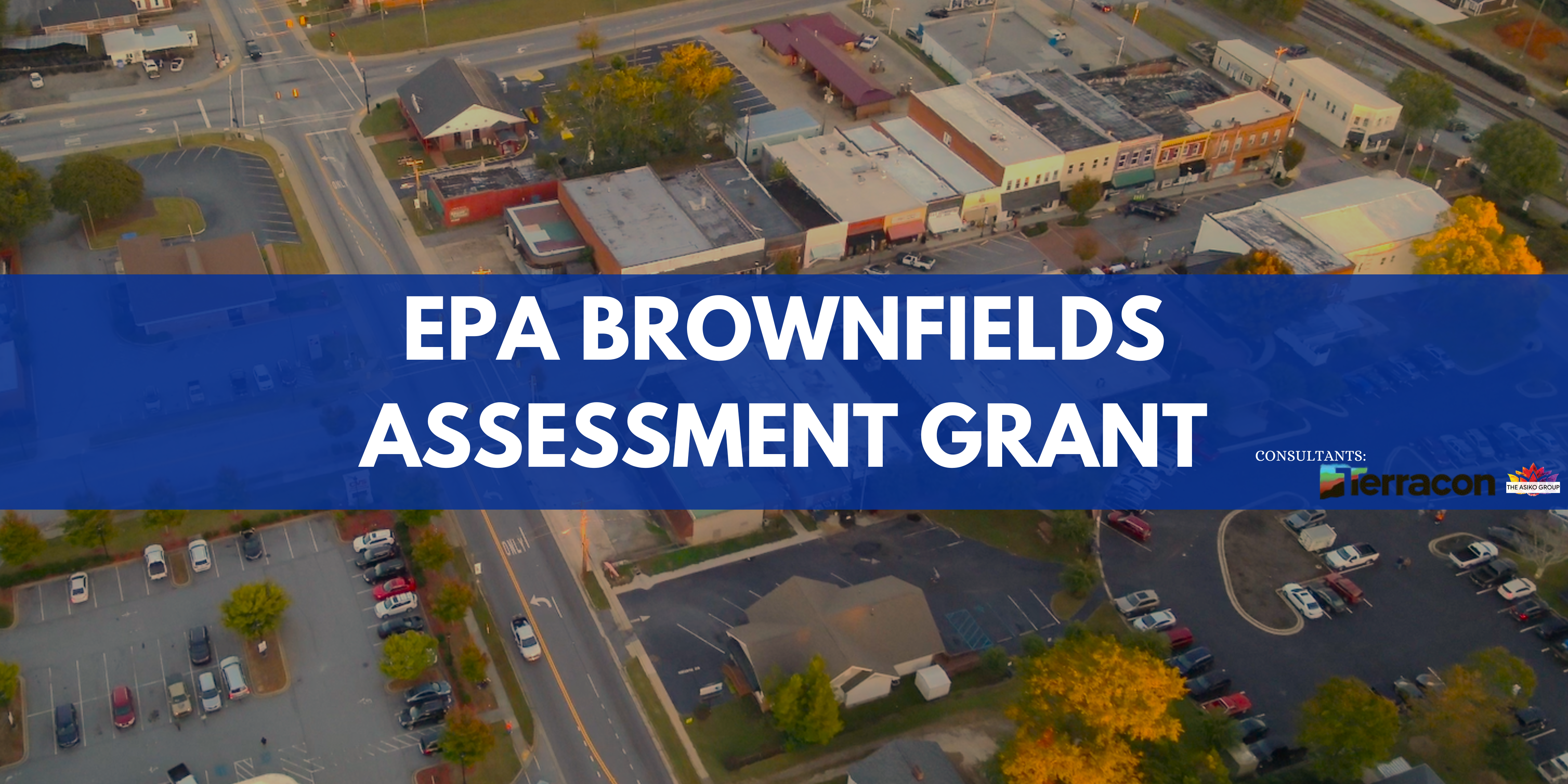
The U.S. Environmental Protection Agency has awarded The City of Liberty a $500,000 Brownfields Assessment Grant to fund revitalization efforts aimed at improving quality of life opportunities. The grant, part of the EPA’s Brownfields Community-Wide Assessment program, will fund environmental assessments of properties in the City.
With community input, The City of Liberty will work with the EPA to identify, develop, and evaluate a list of potential brownfield sites for redevelopment into sources of job opportunities and other community resources.
The EPA Brownfields Assessment Grant program provides funding to inventory, characterize, assess, and conduct cleanup planning and community involvement-related activities, which help to boost local economies and create jobs.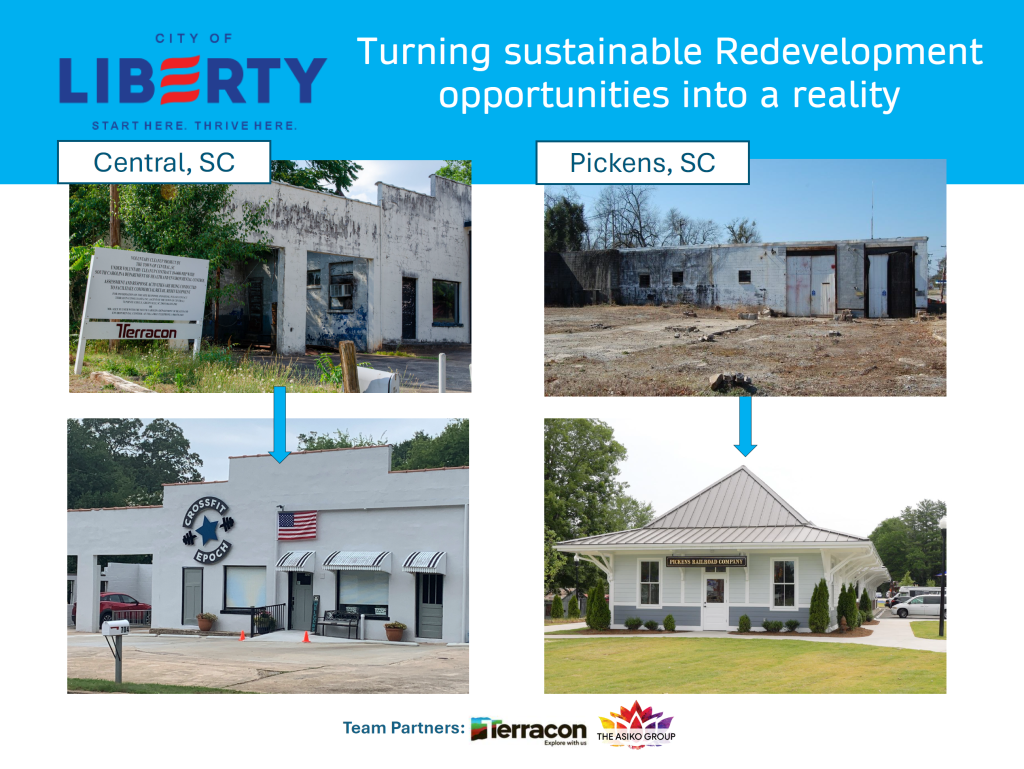
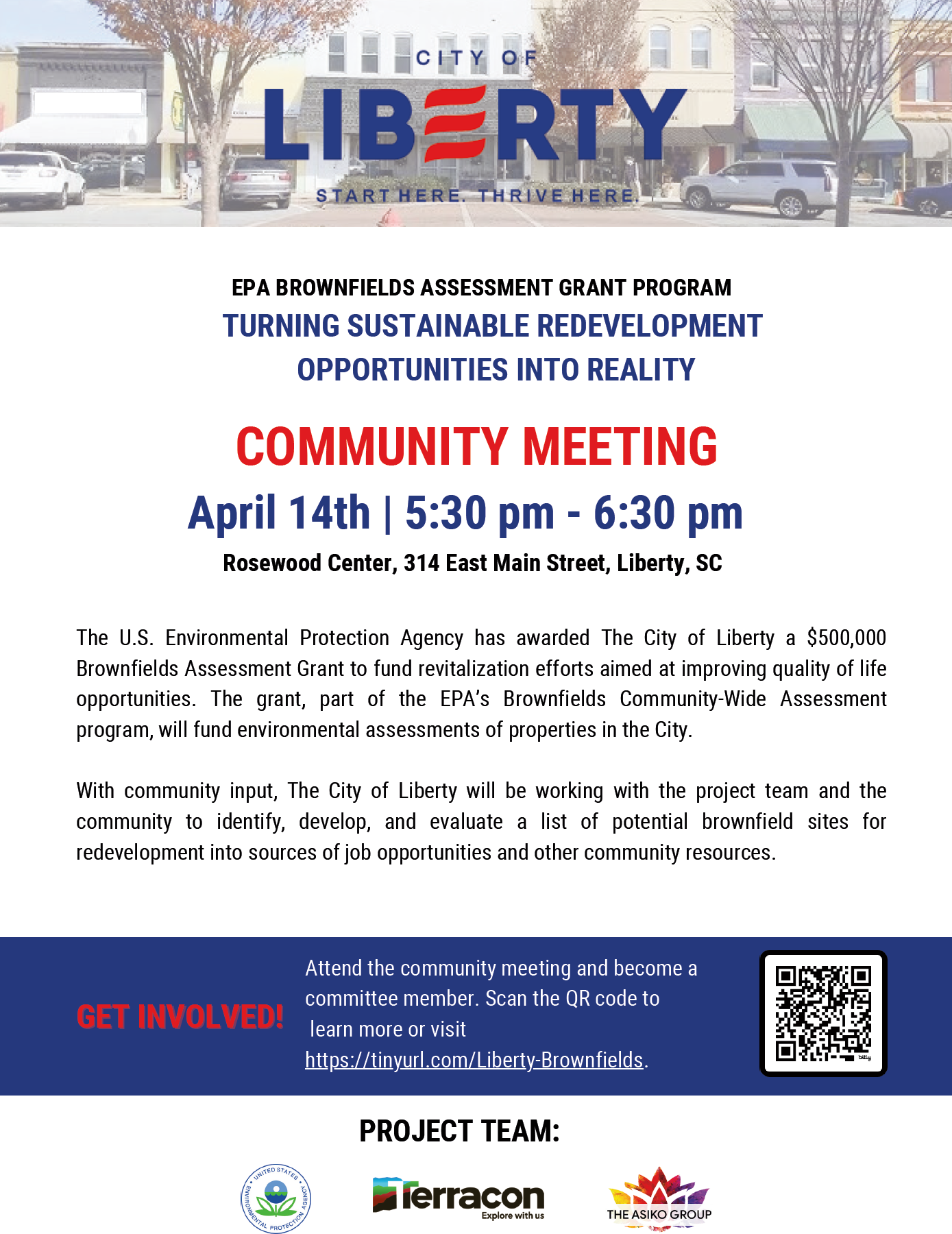
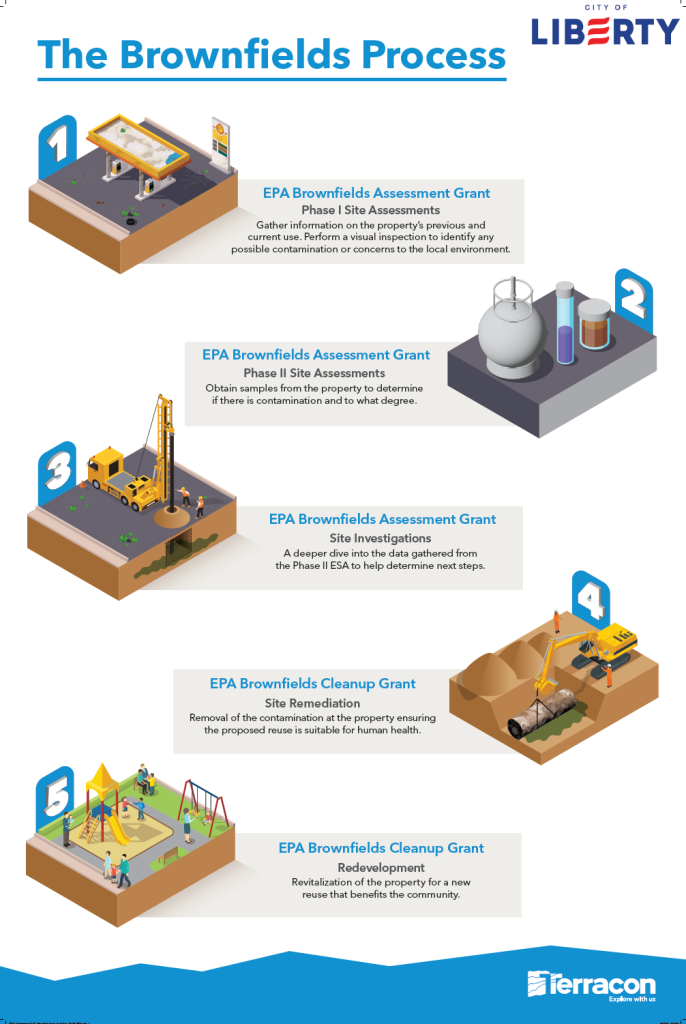
A citizen-led Environmental Steering Committee (EAC) will be initiated to aid in brownfield community outreach and ensure that community involvement with environmental issues are carried forward in future planning, including brownfield redevelopment. The members of this committee will be selected this summer.
Apply to become a committee member here. (Link coming soon)
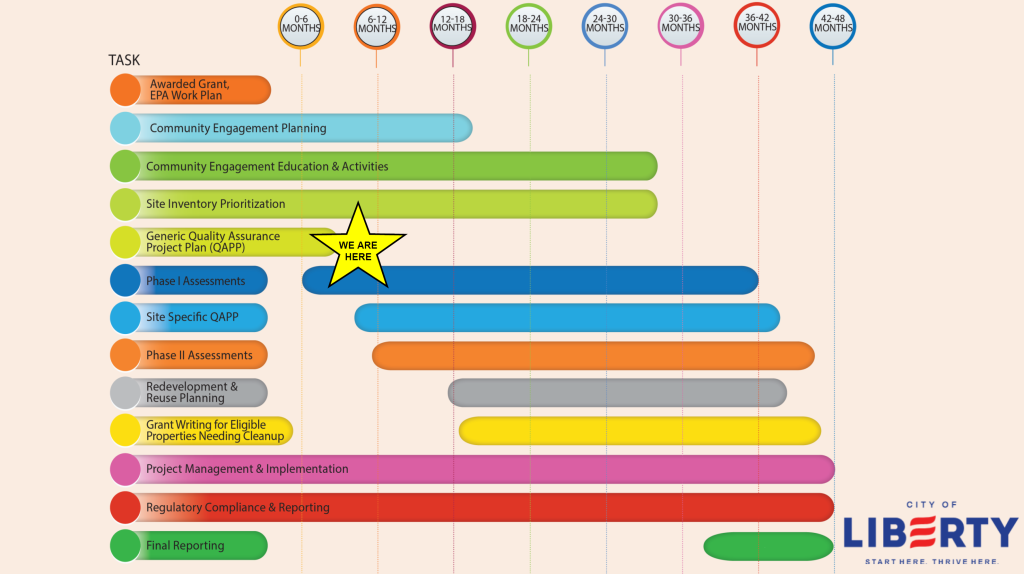
What are Brownfields?
Brownfields are properties that are or may be contaminated with hazardous substances, pollutants, petroleum, or other contaminants that pose a barrier to productive reuse. They often occur in struggling neighborhoods and areas with blight, deteriorated infrastructure, or other challenges. Brownfields may include public or private properties, green spaces, or parks that need preservation.
Why create a brownfields program?
Revitalizing brownfields provides new economic and social benefits to communities, in addition to improving environmental conditions. Reusing stagnant brownfield sites requires special attention. In communities with weak economic or market conditions, socioeconomic barriers, or other challenges, brownfields can remain idle for years. Still, a local community can take several actions, even at the most challenging sites, to best position brownfields for successful reuse.
Here is a brief video on this topic from consultant Terracon – Brownfields Services – Integrating the Environment into Your Community and Redevelopment Goals
Benefits of Assessment?
Brownfield properties can have either real or perceived contamination, and some may need remediation due to the presence of a contaminant. The positive impact of brownfield grant funding for a community of any size can be significant. By taking unused or blighted properties and transforming them into new business opportunities, housing, or recreational areas, communities become renewed.
For examples of completed projects, see the links below:
Cost of Assessment?
Assessment costs are dependent on individual property conditions, size, and potential concerns identified.
What are the goals of the assessment? Will work be performed at selected sites with this funding?
The goal of the City’s Brownfield Assessment Grant is to assess properties and identify if environmental impacts exist at the properties. Funding from this assessment grant can be used to provide recommendations/guidance on how properties can be managed and redeveloped if impacts or contaminants are present at the site. Funding from this assessment grant cannot be used for cleaning up/removal of impacted or contaminated media. Should a property require remediation (i.e. – impacted soil removal, asbestos and/or lead paint abatement, underground storage tank removal), funding for the remediation can be applied for in an EPA Cleanup Grant for individual properties. However, a property must be owned by a public entity (municipality, county, etc.) or a nonprofit to apply for an EPA Cleanup Grant.
Do you have to live in the City of Liberty to serve on the steering committee?
No. However, we encourage people either living or working in the city to volunteer to serve on the Steering Committee.
If a site is outside the City of Liberty, would you be able to assess it?
The decision to assess a property that is located outside City limits would be up to EPA. Based on initial discussions with the EPA, properties within the city should be prioritized, but properties outside of the city can be considered for assessment. This would need to be confirmed by our EPA project officer.
If we know the property has always been residential, is there a need to have it assessed?
Yes. While Phase I Environmental Site Assessments (ESA) are used to identify potential contamination on a property, they also serve as limited liability protection for new property owners from EPA by performing All Appropriate Inquiry (AAI). By performing a Phase I Assessment prior to purchasing a property, the purchaser can prove they are not responsible for potential environmental impacts at a property.
What other properties can be assessed in this process?
Properties that are eligible for assessment are wide-ranging and can be developed or vacant commercial properties. Single-family residential properties are not eligible for assessment.
How does zoning come into play with assessments and redevelopment?
Property assessments will be performed on commercially zoned properties.
Would zoning remain the same after the assessment?
Zoning codes should remain unchanged after assessment.
How much of my tax dollars are being spent?
The grant is 100% funded by the U.S. Environmental Protection Agency (USEPA), with no matching funds required from the City—meaning no local, county, or state funds are used.
If you would like to know how much of your federal taxes contribute to this grant, please contact your local congressional representative.
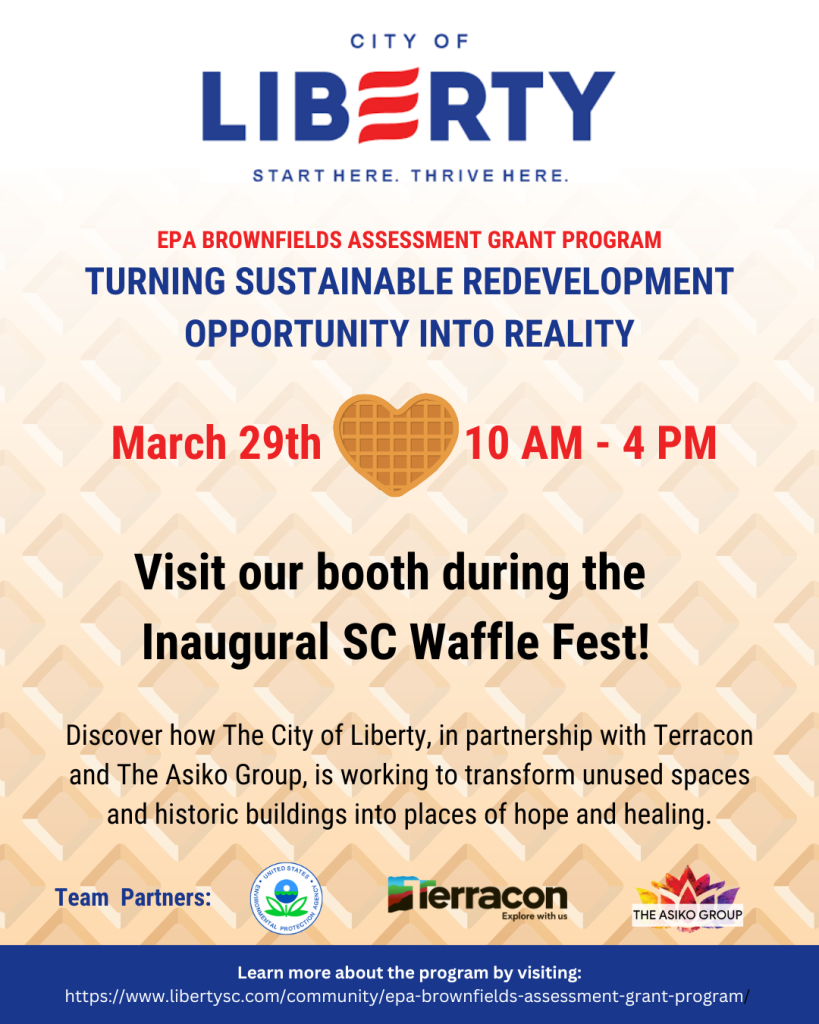
Consultants are paid for through the grant, no funds are used from any city operating budget.

